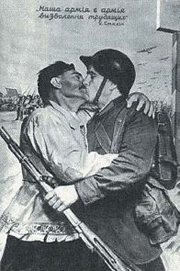동북아역사재단 2010년 07월호 뉴스레터
- Lee Jong-hun Professor, International Institute for Regional & Cultural Studies, Sogang University

This research project focuses on Russia and the ex-Soviet bloc as a representative instance of intensified border and ethnic conflicts in the post-Cold-War period and aims to take the discussion on the topic to a new level. The Cold War, characterized by the U.S.-Soviet bipolar world order, came to an abrupt end within a relatively short period of time (1989-1991) with the dissolution of the Eastern bloc and the Soviet Union. As the centrifugal force went out of control, the complexities of border and ethnic issues grew extremely complex.
Border issues are closely linked to the region's ethnic issues, which have more fundamental historical and cultural origins. Therefore, the research project set out to examine the border issues within a larger historical context.
The project deals with the following six main themes: Russia-Poland border issues; the independence of the three Baltic States and border issues; the historical identity of Kalinigrad Oblast, an isolated territory; ethnic and border issues in Central Asia; and the dissolution of Yugoslavia. There is a common thread tying the six themes, but the spatio-temporal scopes and approaches are varied.
Eastern Europe's border issues and their historical and cultural origins
 Poster promoting the Soviet
Poster promoting the Sovietinvasion of Poland.
Regarding the history of conflict and border issues between Russia and Poland, the project undertook a diachronic survey from the founding of the two states to the present. The border between the two states has disappeared for the most part with the dissolution of the Soviet Union. Nevertheless, despite the fact that the two states appear to be a part of the common Slavic cultural sphere, Russia and Poland prides themselves in being the guardians of the Eastern Orthodox Church and the Roman Catholic Church, respectively. The two countries, situated at the boundary where two disparate and competing civilizations meet, have been embroiled in intense conflicts since the Middle Ages. Just a few months ago, the former Polish president and his entourage attempted a "unilateral" entry into Russia to hold a memorial service for massacred Polish soldiers. The plane crashed and killed everyone on board. This incident may provide a glimpse into a facet of the lingering historical issues between the two nations.
While the three Baltic States gained their independence in the 20th century, this research project also provides a precursory study of the region's historical background and economic conditions. What is remarkable is that while the three states had been under Russian rule for nearly two centuries, each had worked on building a basis for independence, maintaining its national identity and cultural traditions as well as maritime trade. That is, while political borders had disappeared on the Balkan Peninsula, historical and cultural borders had not; as a matter of fact, we were able to witness historical and cultural borders reviving political orders, not once, but twice in the 20th century. Amidst the crisis facing the former Soviet Union, the three Baltic states were able to gain independence in a peaceful manner, without large-scale bloodshed. Although sources of conflict between the three Baltic states and Russia have not been eliminated completely, the resolution of border issues was a case of a relatively amicable agreement.
The historical identity of Kalinigrad is a unique topic. The area of focus is the identity crisis faced by Russians who had moved to live in East Prussia after World War II. The former Soviet Union adopted a historiography that rejected local history and culture and attempted to box it into Russia's history of national development. Kalinigrad, however, rejected the historiography of the Soviet Union and recognized its local history. Kalinigrad demonstrates the emergence of a trans-boundary, exchange-oriented aspect. That is, Kalinigrad offers an interesting case study on how the past, during which historical and cultural borders were rejected, are being overcome.
A large number of ethnic groups relative to the land area are concentrated in the Caucasian region in southern Russia. Therefore, it is a powder keg where ethnic and border issues can erupt at any moment. The most intense conflict is between Azerbaijan and Armenia, which had belonged to the former Soviet bloc. While Nagorno-Karabakh is territorially a part of Azerbaijan, the overwhelming majority of the population is Armenian. These Armenians are taking issue with how the border was set during the former Soviet era and are attempting to turn the region's historical and cultural boundary into a political one. Azerbaijan, for its part, is against the move, asserting its territorial sovereignty over the region. Violent clashes and tragic bloodshed have been recurring between Nagorno-Karabakh's Armenian population and Azerbaijan. Despite efforts by the international community, the region's border issue has yet to be resolved.
Hoping to broaden the perspectival horizon of the discussion on Northeast Asia's historical issues
Central Asia was subsumed by Russia in the late 19th century. Most Central Asians were nomads and had very little understanding of borders. During the Soviet era, artificial boundaries were drawn up, dividing the region into several republics. These artificial boundaries became national borders after the collapse of the Soviet Union and the emergence of five independent Central Asian states. These borders do not properly reflect actual ethnic and economic divisions and have been a source of conflict. The recent crisis in Kyrgyzstan is a typical manifestation of this conflict. Another point of interest is a large number of ethnic Koreans who had been forced to move to the region in the 1930s. Nationalist policies had been carried out in the area since the Soviet era. The policies, which prioritize indigenous populations, led to the alienation and isolation of the ethnic Korean migrants, who eventually migrated back to Russia.
The Federal People's Republic of Yugoslavia, in some sense, was a miniature version of the Soviet Union. The dissolution process was accompanied by ethnic cleansing, a notorious and heinous case of bloodshed. It is proposed that the main cause of the Yugoslav Wars was Serbia's (the dominant power among the former Yugoslav republics) attempt at resetting national borders to include Serbian populations and their areas of residence beyond Serbia's territorial boundaries. This, in turn, had its origin in the outburst of Serbian nationalism after the death of Tito, who had managed to keep it under control. It is a case whereby an extreme attempt at aligning national and political boundaries was frustrated by strong resistance from neighboring countries and international intervention.
As demonstrated above, case studies on border and national identity issues between Russia and its neighbors shed light on sources of intensifying conflict around the world in the post-Cold-War era and provide insight into possible resolutions. I believe that such case studies can contribute to broadening the perspectival horizon on the discussion of historical and territorial issues in Northeast Asia.


